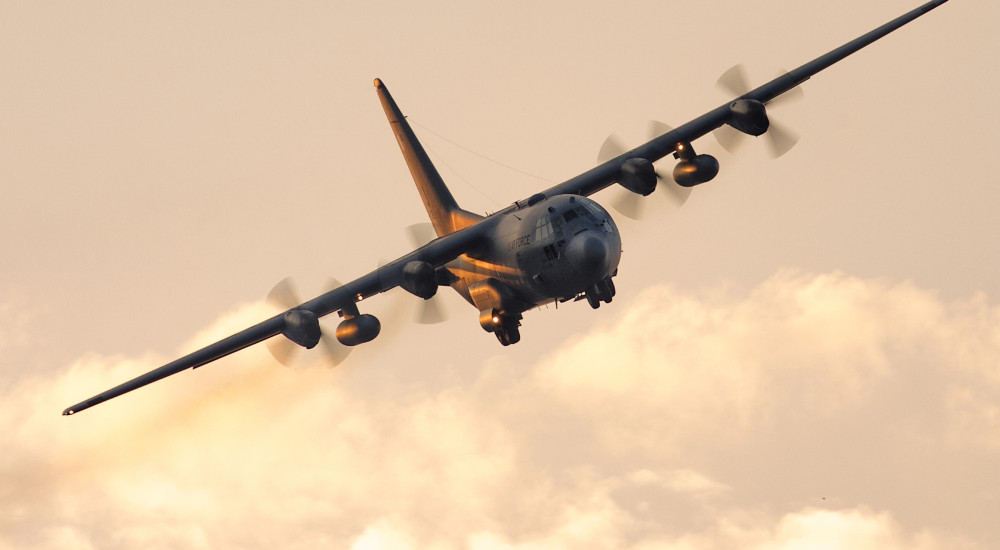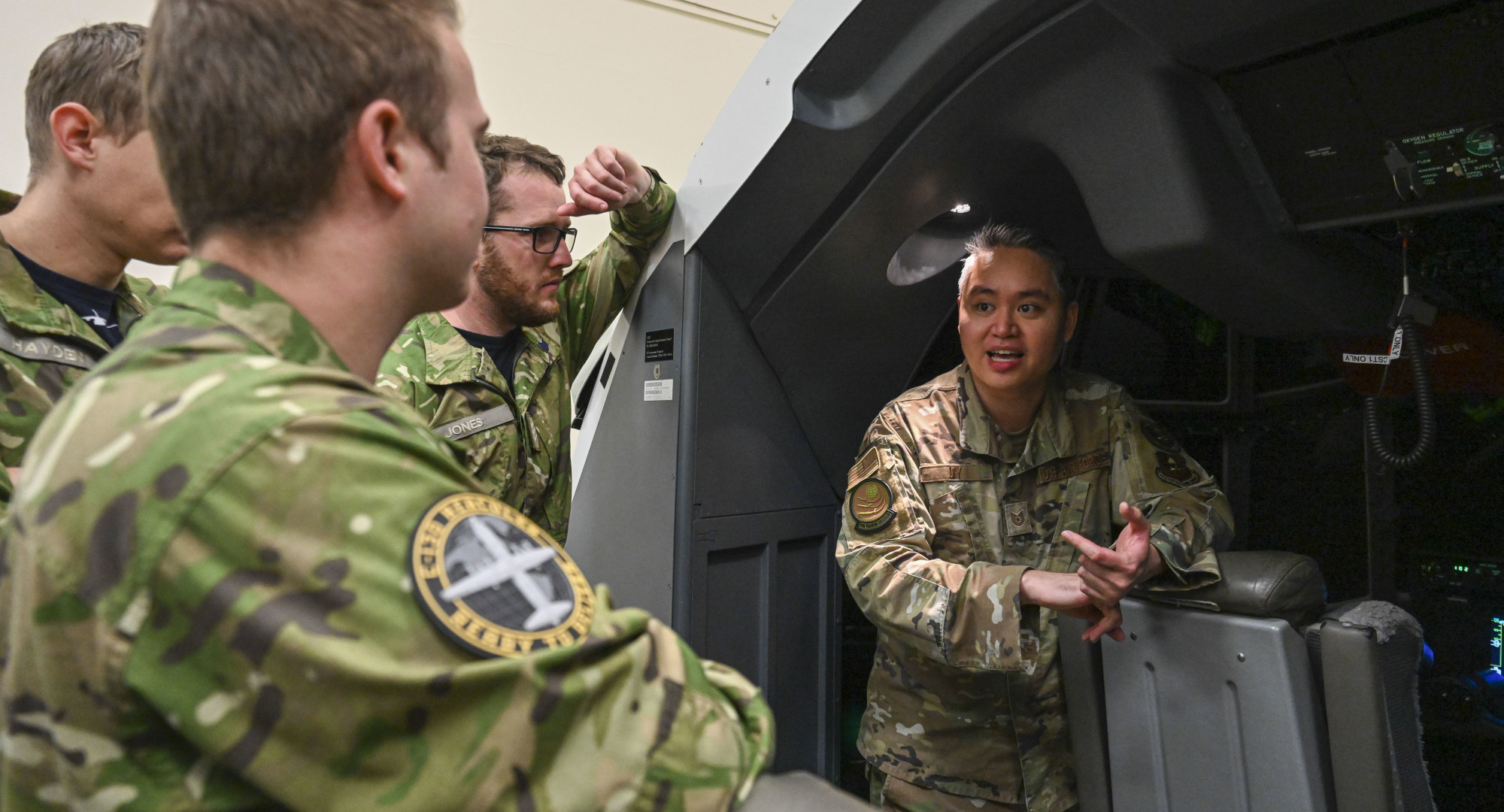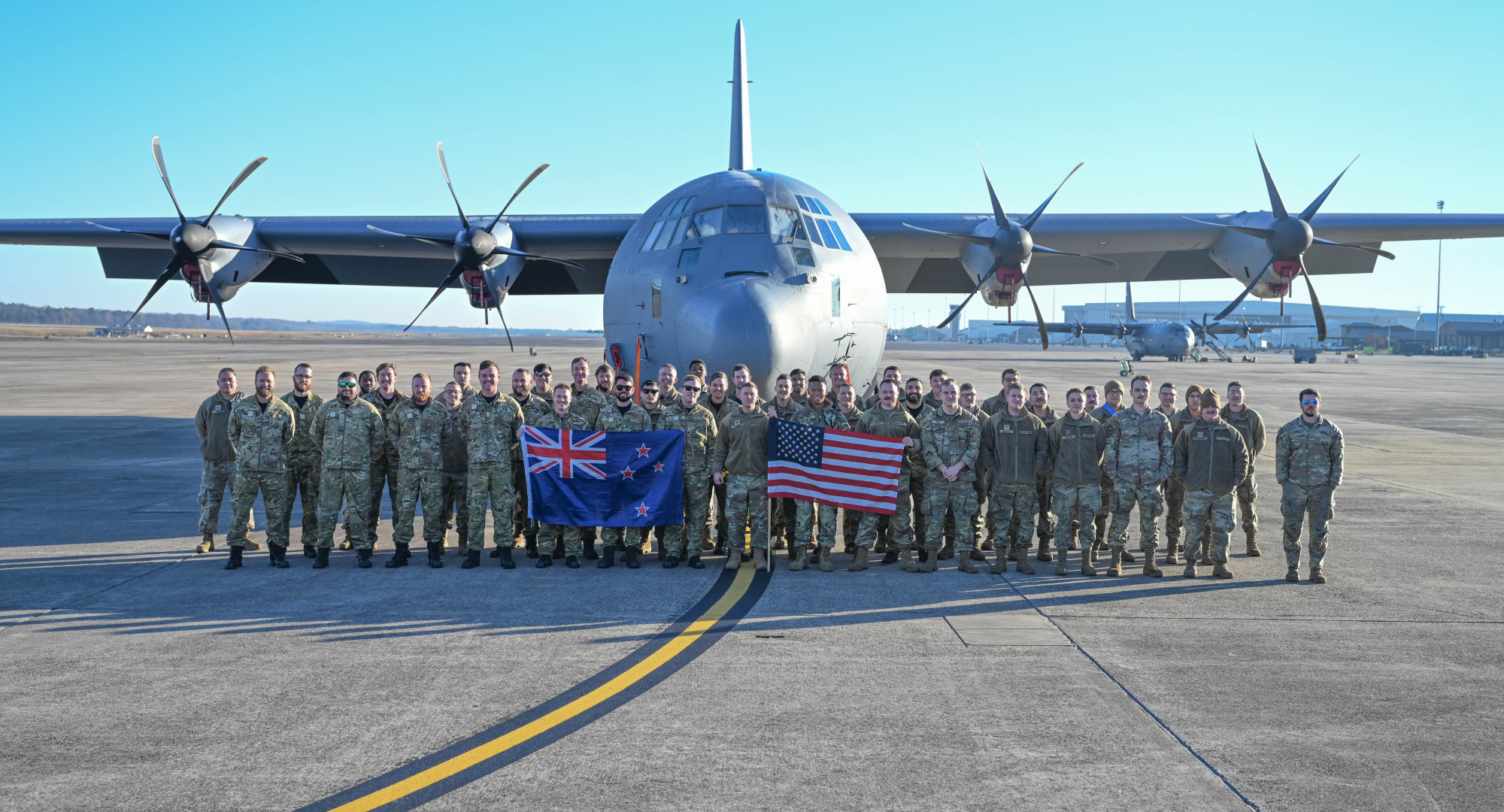This year will see the Royal New Zealand Air Force welcome the first of the new fleet of C-130J Hercules, a highly advanced, multi-purpose tactical airlift aircraft. Meet the aviators tasked with flying and maintaining this militarised bird.
In 2020 the Future Air Mobility Capability (FAMC) C-130J Integrated Project Team (IPT) reached an agreement with the United States Air Force (USAF) for selected personnel to undertake extensive training on the new Hercules.
This meant that a small group of Air Force aviators packed their bags and flew to the United States to set up a new life in Little Rock, Arkansas, for 12–18 months.

Currently, there are 12 maintainers and 12 aircrew stationed at Little Rock Air Force Base who train alongside USAF personnel. Avionics technician Sergeant Brett Simpkin calls his time on the base a “once-in-a-career opportunity” to not only advance his skillset but also experience the USAF culture.
“The scale of Little Rock Air Force Base is impressive,” he says. “Dozens of Hercules are based here giving many opportunities to get hands-on with the C-130J and test our knowledge during different exercises.
“A highlight has been working on the Hercules in Hawaii during an air mobility exercise with the USAF, Marines, and Army personnel.”
Corporal Dalton Blatch echoes SGT Simpkin’s sentiment. He sees a significant difference between the current C-130H model and the incoming C-130J model and considers this training “invaluable”.
“One benefit of the new C-130J model is its modernised avionics system. Part of this is on-board diagnostics, which enables us to quickly find and diagnose aircraft faults,” he says.

“There’s also improved communications systems, new engines, and an added MX-20 imaging turret to learn about.”
Sergeant Tom Cowan has faced a steep learning curve in Little Rock, having previously worked on the P-3K2 Orion.
One of the most impressive aspects of what these aviators do is the sheer absorption of technical knowledge from the USAF specialists.
Corporal Liam Sole said the New Zealand crew has been welcomed into USAF squadrons where seven different trades contribute to aircraft maintenance – an eye-opening insight given these specialisations are covered by only two trades back at home.
“As an example, they have specialists for engines, hydraulics, and fuel, while one of our trades will perform all of those jobs,” he says.
The experience gained working alongside the USAF specialists has strengthened the Kiwi team’s specialist knowledge and will stand them in good stead as a small but versatile maintenance team.
For co-pilots Cody Hughes and Mick Wansink, both Flight Lieutenants, the road to Little Rock has been a longer journey. Their training started in Georgia, where they completed four months of classroom and simulator training at the Lockheed Martin training facility. From there, they moved to Rhode Island for two months to fly with an Air National Guard unit that operates Hercules to gain an aircraft certification allowing them to fly with the USAF.
“Each flight gives us a deeper understanding of the aircraft and the capabilities on offer,” says FLTFT Wansink.
“Our training has recently focussed on tactical formation flying, which is not what we generally do in New Zealand, but we still gain invaluable experience.”
FLTLT Hughes adds they’ve adopted a new “philosophy of flying”, noting that the crew on the C-130J drops from the six on the C-130H to four – two pilots and two air loadmasters.

“The experience we are gaining with the USAF is preparing us well to operate without the engineer and navigator who flew on the previous H model, but it is a steep learning curve.”
But for most of our aviators, the biggest challenge has been less about the job and more about the impact on their lives.
For Maintenance Coordinator Flight Sergeant Andy Fieldes, the decision to move to Arkansas for 18 months not only affected him, but also his family.
“I’m joined by my wife and two kids here in Little Rock, so we had a lot to consider when we made our decision to move here. We have rented out our house in Auckland, we sold our vehicles, my wife resigned from her previous role, and we also had to arrange child care here on base. I’m really glad we made the decision to accept the posting and we have been enjoying making the most of our time here.”
F/S Fieldes’ wife Squadron Leader Mel Fieldes, says she has adjusted to life on base. She finds balance in taking care of the kids, while also putting her expertise to use, now working as a publication and training support officer.
“I’d previously been to Little Rock on training exercises but it’s different being here as a family. The kids have adapted well to their new home and have made lots of friends.”
FLTLT Hughes also brought his wife and child with him to the United States, and they now have another child on the way. The family has enjoyed spending time in Georgia and Rhode Island but were eager to settle into their house in Little Rock.
All in all, our aviators occupy 20 of the roughly 900 houses on base. This has allowed the team to establish a Kiwi community, formed as much by the partners and families as the military personnel themselves. In total, there are currently 61 New Zealanders at Little Rock.
“We spend a lot of time together,” said SQNLDR Fieldes. “We’ve developed a tight-knit group. We keep in touch all the time to make sure that everyone is okay – and well supplied with Marmite.”
She highlights the Kiwi-American style BBQ crossovers enjoyed by the families, when the weather has allowed for it. “Most guys have honed their charcoal barbecuing skills, so we’re having a lot of ribs, a lot of brisket.”
F/S Fieldes also speaks highly of the southern hospitality they have received. “We have had a lot of social events and sporting competitions with our USAF friends, and one event that stands out to me was our Anzac service that our USAF colleagues attended. It was a very humbling experience having USAF pay their respects to the ANZACs, and they were quite impressed with our long-standing tradition of rum and milk to start the day.” Overall, it seems the team have adjusted to life at Little Rock, which sounds more comparable to a large township than an Air Force base. With a total population of 13,000, the base boasts a supermarket, two petrol stations, a Burger King, and even a bowling alley.
They have also enjoyed the experience of the numerous on-base events such as family dinners and activities, and a Christmas tree lighting ceremony.
In their free time, the aviators have made the most of their geography in different ways. Many have taken the time to explore the surrounding states and nations, taking road trips on weekends and during their leave entitlements.
For now, the Kiwis seem well-adjusted to the Little Rock routine, content to enjoy the learning experience for as long as it lasts. But SQNLDR Fieldes seems to speak for all of them when she mentions home.
“It’ll be nice just to see the beach again.”
Until then, our personnel will continue to advance their skillsets, deepen their knowledge, and uphold the elite standard of the Air Force, making us proud as always. And the next time they do see the shoreline of an Aotearoa beach, it might just be from the window of a descending C-130J Hercules, cleared for landing into its new home at Base Auckland.

